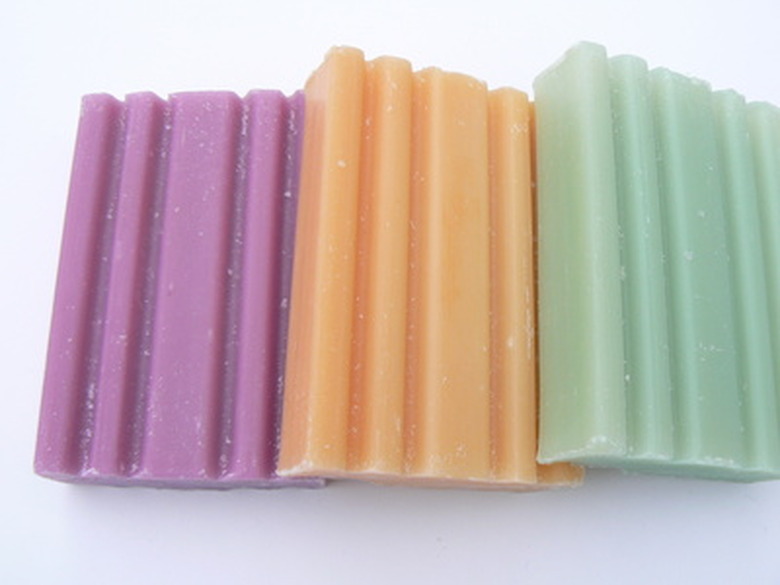How To Use Lye Safely
Before using lye for cleaning or for lye soap making, it is important to know how to safely handle it and the dangers involved with its use. Lye has been used by homemakers for centuries because of its cleaning properties, cheap cost and lasting qualities. Lye can be used safely if certain rules are followed.
Step 1
Know what lye is and its dangers. Lye is an alkali chemical- sodium hydroxide, also known as caustic soda. This means it is not an acid but a base and is counteracted by acids such as vinegar or citrus juices. When purchasing lye, know that it comes in a dry granular form for mixing with water to make a solution that is used for homemade soaps. When lye is mixed with water, heat is released, so the container used to mix lye in has to be able to take that heat. Lye can burn the skin and damage the eyes in the dry or wet form. It also releases fumes, when mixed with water, that can harm the lungs. If swallowed, lye will burn the esophagus and can cause death. Children and pets should not be allowed around lye.
Step 2
When using lye as part of the soap making supplies, follow some simple cautions. Never add water to lye because it will react violently and may splatter. Always add lye slowly to cool water and wear protective clothing such as long gloves. Lye will react with metals such as aluminum, cast iron and steel. It should be stored and mixed in ceramic, stoneware, glass or heat-resistant plastic containers. Glass should be used with caution because it may break due to the heat released when lye reacts. Because of the fumes formed, work in a well-ventilated area when making lye solutions and don't breathe the fumes. Goggles and protective clothing such as chemical-resistant gloves are a good idea. Utensils used with lye need to be made of wood or heat-proof plastic and both they and any pots used should never be used for food items again. Any containers used to store lye or lye solutions should be adequately marked and kept in safe locations.
Step 3
When working with lye, keep a bowl of vinegar nearby to splash on any skin the lye accidentally comes in contact with. Vinegar will counteract lye and stop its burning. Milk will also neutralize lye and can be used if the lye is accidentally swallowed. If either of these thing happen, call 911 immediately and get medical help. Do not induce vomiting or give vinegar to someone who has swallowed lye. If lye gets on the skin, flush it with lots of water with some salt if there is no vinegar. The same goes for the eyes, flush them repeatedly with water. Lye soap has to be aged to allow the fat in the soap to mellow the lye so the soap will not be harsh to the skin.
Things Needed
- Wooden or heat-resistant plastic spoons
- Glass, enamel, stoneware or heat-resistant plastic containers
- Rubber chemical-resistant gloves
- Vinegar
- Milk or ice cream
TL;DR (Too Long; Didn't Read)
Be sure the work place is adequately prepared before working with lye. In a humid environment, store granular lye in a tight non-metal container. It will react with moisture in the air.
Cite This Article
MLA
Contributor, . "How To Use Lye Safely" sciencing.com, https://www.sciencing.com/use-safely-understand-its-dangers-4742114/. 24 April 2017.
APA
Contributor, . (2017, April 24). How To Use Lye Safely. sciencing.com. Retrieved from https://www.sciencing.com/use-safely-understand-its-dangers-4742114/
Chicago
Contributor, . How To Use Lye Safely last modified March 24, 2022. https://www.sciencing.com/use-safely-understand-its-dangers-4742114/
